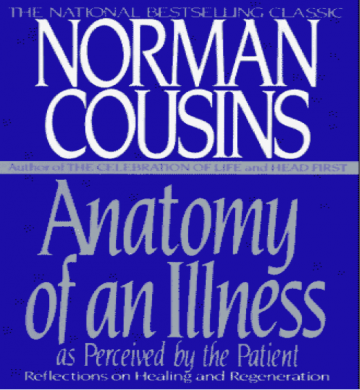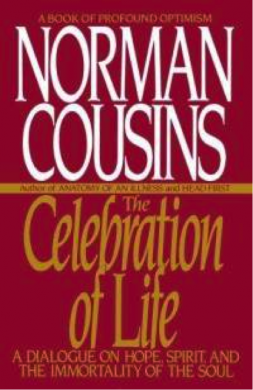Norman Cousins was born in 1915 and lived till 1990. In this video he explains how he learned a lot from the illnesses he experienced in life.
He was a political journalist, well known for his humanitarian views. He reached a wider audience, however, with his best selling book Anatomy of an Illness. The book showed how people could mobilise their inner strength to fight illness.
In addition to his journalistic work, Norman was Adjunct Professor of Medical Humanities for the School of Medicine at the University of California. He specialised in researching how human emotions could affect a person’s ability to stay healthy and overcome illness.
Norman translated this into action himself when diagnosed with a life-threatening illness. Told that he had little chance of surviving, Cousins developed a personal recovery programme.
This involved taking lots of Vitamin C, together with mobilising his positive emotions. The latter involved him watching lots of Marx Brothers films. Norman later wrote:
I made the joyous discovery that ten minutes of genuine belly laughter had an anaesthetic effect and would give me at least two hours of pain-free sleep.
When the pain-killing effect of the laughter wore off, we would switch on the motion picture projector again and not infrequently, it would lead to another pain-free interval.
Norman recovered and published his findings in medical journals. This led to him producing the book, whose full title was Anatomy of an Illness as Perceived by the Patient: Reflections on Healing and Regeneration.
Whilst warning against charlatans who ignored real medical problems, Norman stressed the importance of people mobilising their inner resources to live healthy lives. He wrote:
Hearty laughter is a good way to jog internally without having to go outdoors.
Anatomy was published in 1979. Combined with the books written by doctors such a Bernie Siegel, it had a profound influence on the way people began conducted themselves as ‘patients’.
Norman believed that people could take a stand towards setbacks. He wrote:
Wisdom consists of the anticipation of consequences.
A human being fashions his consequences as surely as he fashions his goods or his dwelling his goods or his dwelling. Nothing that he says, thinks or does is without consequences.
Norman was, above everything, a world citizen. He believed that humanity could create a positive planet. But this would require both imagination and will power. He wrote:
The main failure of education is that it has not prepared people to comprehend matters concerning human destiny.
Leadership on this higher level does not require mountains of gold or thundering propaganda. It is concerned with human destiny. Human destiny is the issue.
The essential lesson most people still resist is that they are members of one species.
It is this that we all share – the emergence of a common destiny and the beginning of the perception, however misty, that something beyond the nation will have to be brought into being if the human race is to have any meaning.
This sounds a big task, but Norman remained a positive realist. Each of us could contribute by encouraging the spark in other human beings. He wrote:
If something comes to life in others because of you, then you have made an approach to immortality.
Norman eventually died in 1990, many years after the initial gloomy diagnosis. He helped to put the patient at the centre of health care and invite them to work in collaboration with their doctors.




Dr David Jeremiah spoke about him today.”Don’t deny the diagnosis but defy the verdict “. I think that is so much wisdom. And it goes with the teachings of Jesus.
Wonderful????